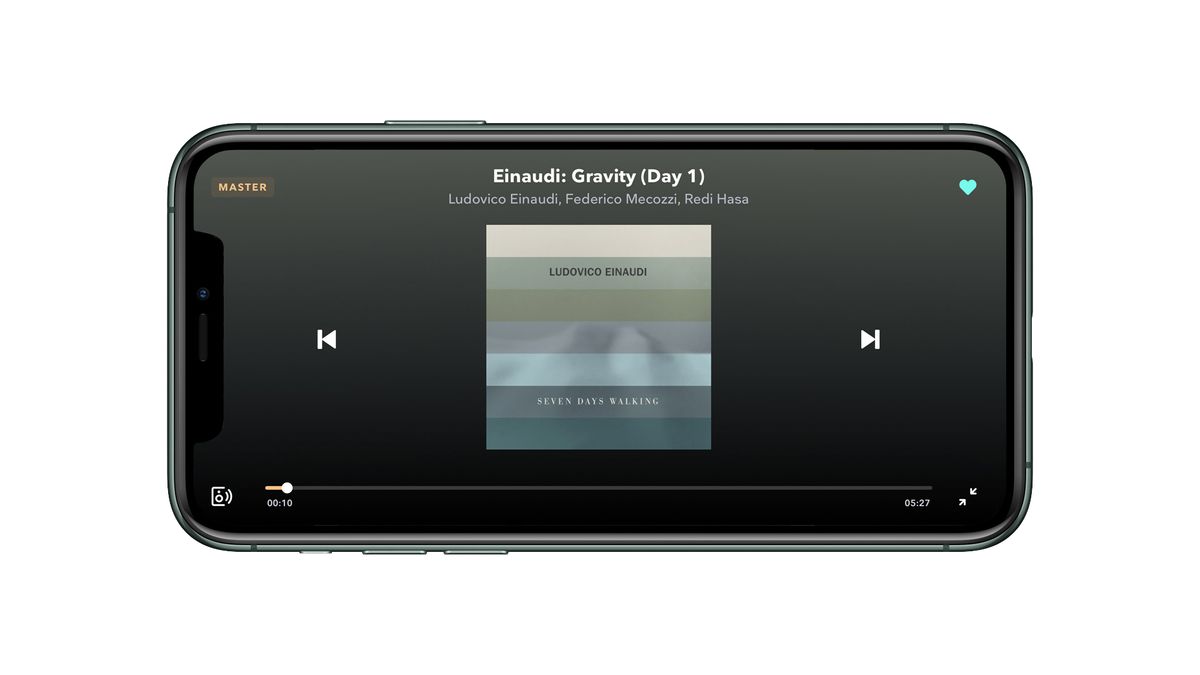What Hi-Fi? Verdict
It’s not the performance-per-pound champion of the current range, but the 11 Pro Max is still an awesome smartphone
Pros
- +
Incredible camera
- +
Huge, beautiful screen
- +
Superb battery life
Cons
- -
Prohibitively expensive
- -
Few will make real use of camera
- -
Smaller model is sharper
Why you can trust What Hi-Fi?
Thanks to Apple and others, much of the recent focus in the smartphone market has been on affordable models, but there are still plenty of people who want the best. And the best phone that Apple makes, as far as the company is concerned, is the 11 Pro Max.
With Apple considered by many to be the best smartphone manufacturer, this could in theory be the best phone you can currently buy.
But while the 11 Pro Max is an awesome phone and is in many ways the best, it’s not actually the best phone for everyone.
Price
Bought directly from Apple, the iPhone 11 Pro Max price starts at £1149 ($1099, AU$1899).
That’s £100 ($100, AU$150) more expensive than the smaller version of the iPhone 11 Pro, and a massive £420 ($400, AU$700) more expensive than the standard iPhone 11.
Those prices are for the 64GB version of each phone. The 11 Pros are both also available with 256GB and 512GB of internal storage, but the added costs are high.
Discounts are now available if you shop around, and most retailers (including Apple itself) will drop the price further if you have an old iPhone to trade in. At the time of writing, contract deals start at around £60 ($100) per month.
Features
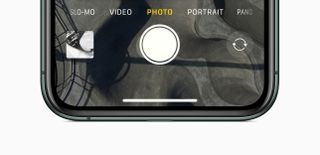
The big difference between the iPhone 11 Pro and iPhone 11 Pro Max is the size: the Max is 14mm taller and 6mm wider than its sibling, but the depth measurement stays at a slim 8.1mm.
The smooth finish, which combines gloss edges with a matte rear, is beautiful but rather slippy and that makes the phone rather droppable, particularly at this size. You will want to add a case for grip and protection as soon as possible.
The extra casework facilitates a larger screen: the 11 Pro Max has a 6.5in OLED display, whereas the smaller 11 Pro’s is 5.8in. Thankfully, the resolution has also been increased so that pixel density remains at an impressive 458ppi. For comparison, the cheaper iPhone 11 has a 6.1in LCD screen with a pixel density of 326ppi.

Display 6.5in OLED
Resolution 2688 x 1242 (458ppi)
Front camera 7MP
Rear camera Triple 12MP Ultra Wide, Wide and Telephoto
RAM 4GB
OS iOS 13
Storage 64GB / 256GB / 512GB
As with the 11 Pro, the 11 Pro Max’s screen is interrupted by the now-familiar notch, and the bottom of the phone has two perforated grilles, one of which packs a speaker, while the other is there purely to keep things symmetrical.
In the top-left corner of the rear panel is the unmissable camera array that still looks a bit awkward. We’re looking forward to the day that stunningly advanced camera systems don’t look like a fly’s eyeball.
At the bottom of the phone is the same Lightning connector we’ve seen for the last few years. The rumoured move to USB-C, in line with the latest iPad Pro and MacBooks, hasn’t materialised, until maybe next year when the iPhone should be due a bigger design upgrade.
Like the iPhone 11 and standard-sized 11 Pro, the 11 Pro Max is officially IP68 rated for water and dust resistance, but its waterproofing is better than before – it now can go down to a depth of four metres for up to 30mins. That may be of limited use in real life, but it’s more likely to survive being dropped into the deep end of a swimming pool.
Under the skin is the new A13 Bionic chip, which Apple claims makes the iPhone 11 Pro not only 'the most powerful iPhone ever' but also ‘the fastest smartphone on the market’. We experienced no slowdowns during our time with the phone, but it’s not as if the iPhone XS Max that it replaced was in any way slow.
While the 11 Pro Max is no faster than the smaller 11 Pro, it does have a bigger battery that will stay charged longer depending on what you’re doing with it: you get just one extra hour when streaming video, for example, but an extra 15 hours of music-listening.
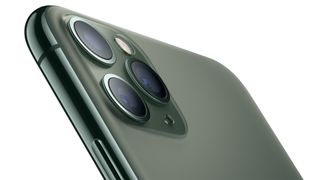
All new iPhones now come with iOS 13 installed. This is an evolutionary update and one that is also now available to older iPhones. The revolutionary part of the iPhone 11 Pro is undoubtedly the camera – or, more accurately, the three cameras – a ‘standard’ one, an ultra-wide option and a 2x optical zoom lens.
Open the Camera app and the standard lens will be selected by default and the standard 4:3 viewfinder appears, but the black areas to the left and right turn opaque when the phone senses that it might be useful, indicating the extra bits of the scene that would be captured by switching to the ultra-wide lens.
It’s a useful visual aid that satisfies, among other things, the simple urge to capture a picture of the extended family gathered around the dinner table without needing to get out of your seat.
Apple's Portrait feature is better than ever, with a high-exposure mode to create more studio-like photos. Much of this photographic magic is enabled by the Neural Engine, the artificial intelligence within the iPhone 11 Pro and Pro Max. This also brings improved low-light performance, to take on Google’s Night Sight on the Pixel 3 XL, as well as other smart features. The iPhone 11 Pros will visually suggest enhancements as you shoot, such as a better angle, focus or camera mode.
We notice a small amount of judder when flipping between the different lenses, but this doesn’t spoil the experience – this is an amazing camera that assists point-and-clickers in getting better shots, and has loads of headroom for photography experts to go crazy.
Screen
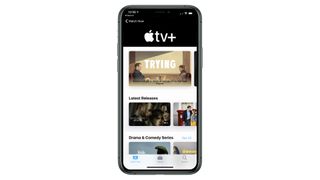
The two iPhone 11 Pro phones are capable of going brighter than both the last-gen iPhone XS and current iPhone 11, with Apple stating ‘typical’ peak brightness is 800 nits for the Pros and 625 nits for those others. That 800 nits can be boosted to 1200 nits when required to by HDR video content, with the phones supporting both Dolby Vision and HDR10.
As we noted in our review of the standard-sized iPhone 11 Pro, you don’t really notice the picture being brighter in all scenes, but you do notice significantly more shading and detail in the brightest parts of an otherwise dark image when compared to the outgoing XS.
We praised that version of the Pro for combining flawless OLED black depth with loads of shadow detail, for having a balanced and authentic approach to colours, for crisp and solid edges, and for reproducing motion with little judder or blur. Broadly speaking, the 11 Pro Max is the same, but there are subtle differences.
Playing It in Dolby Vision, the colours, black depth, shadow detail and brightness are all on a par, but the bigger of the two phones is just a bit softer in its reproduction, despite the two phones having the same pixel density. That is a slight disappointment, for sure, but is more than made up for by the increased cinematic quality of the larger screen.
Switching to Three Billboards Outside Ebbing, Missouri in HDR10, the standard-sized 11 Pro produces deeper blacks while the Max digs up more dark detail. There’s a little more colour vibrancy to the smaller model’s reproduction, too, and it’s once again crisper.
With Indiana Jones And The Raiders Of The Lost Ark in standard dynamic range (SDR), there’s a similar result, in that the Max is a touch softer and less vibrant than its smaller sibling.
With all of these comparisons, the differences are marginal, and you will feel in no way short-changed by the Max’s video performance, which is more involving on account of the increased size. However, there’s no denying that the smaller phone’s screen is marginally the better of the two.
Sound
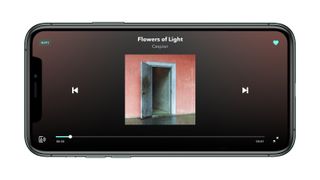
When listening via headphones, whether Bluetooth or wired (the official headphone adapter is not included in the box), there’s no discernible difference between the performances of the two iPhone 11 Pros. Both are crisp, punchy and detailed, with the fairly neutral tonal balance for which Apple is known, and with a level of subtlety and refinement that goes above and beyond previous iPhones.
The 11 Pros don’t colour your music. Instead they deliver it as intended, and that makes them fabulously flexible and genre-agnostic. Play Hayley Williams’ Simmer and the edgy pop beats are delivered with clinical snap and impressive spaciousness, switch to Nick Cave and Warren Ellis’s The Mother and the subtlety with which the sparse, acoustic arrangement is delivered is enough to take your breath away, as long as you're using a quality pair of cans.
While we recommend that any out-loud listening be done via wireless speaker, Apple has put a lot of effort into the performance of the iPhone 11 Pros’ speakers, even going as far as offering support for Dolby Atmos. The sound is more open and spacious than before, and louder too, and that means movie soundtracks are delivered a bit more effectively.
The Max does in fact produce a marginally bigger soundstage than the smaller model, and is just a bit snappier, but both phones are badly lacking bass weight and depth when compared to even the most basic Bluetooth speaker.
Verdict
In most regards, the iPhone 11 Pro Max is exactly what you’d expect: a bigger version of the iPhone 11 Pro, which is a superb phone. If you’re already used to the size of Apple’s plus-sized handsets, this will be right up your street.
That said, for many people the 5.8in screen of its smaller sibling will more than suffice, and it’s delivered in a more manageable package. It just has the edge in terms of image quality, too.
What’s more, much of what you’re paying for with either of the Pro models is the camera, and you need to be serious about photography in order to take full advantage of that.
For that reason, we think the standard iPhone 11 is the current pick of the range and will best suit most buyers. But if you are a photography aficionado or you have deep pockets and want the most cinematic smartphone experience available, the Pros are for you. It then comes down to a choice between the one with the much bigger screen, or the one with the slightly better screen.
SCORES
- Screen 5
- Sound 5
- Features 5
MORE:
Best iPhone Pro Max deals 2020
Read our Apple iPhone 11 Pro review
Read our Samsung Galaxy S20 review
What Hi-Fi?, founded in 1976, is the world's leading independent guide to buying and owning hi-fi and home entertainment products. Our comprehensive tests help you buy the very best for your money, with our advice sections giving you step-by-step information on how to get even more from your music and movies. Everything is tested by our dedicated team of in-house reviewers in our custom-built test rooms in London, Reading and Bath. Our coveted five-star rating and Awards are recognised all over the world as the ultimate seal of approval, so you can buy with absolute confidence.
-
eoc69 I've said it before and I will say it again, a review of a bloody phone has no place in a hi fi magazine.Reply
